Allergen control remains a critical component of the HACCP Plan of all food and beverage Food Safety Programs. Due to the allergenic reaction of the host's immune system to a specific protein, allergens need to be treated and controlled in a Master Sanitation Schedule and Program.
Under the USDA-FSIS and FDA-FSMA in the USA, and CFIA in Canada, undeclared allergens rose to 49.3% in 2023 of all food recalls. Listeria recalls were a distant second at 15%. Last year, the rise in mis-labeling issues of undeclared allergens is partially attributed to the inclusion by FDA and USDA of sesame as a major allergen. The Big Nine include peanut/legume, tree nut, soybean, shellfish, fish, wheat/gluten, egg, milk, and sesame.
FSMA mandates allergen control as a critical preventive control, with SQF as a mandatory clause, and BRC as a fundamental clause. A failure in allergen management can directly lead to pulling a company's certification and why a comprehensive food allergen control program is critical.
The primary goals of any food allergen control program should include:
- Identification of key team members
- Prevention of contact between allergenic and non-allergenic foods
- Ensuring label accuracy
- Documenting everything
- Avoiding regulatory missteps
Steps for Better Allergen Control
1. Know your processing lines and products.
Keep track of the number of allergens in specific products and the production lines on which you produce them.
A good allergen control policy starts at the beginning with the raw materials. It's a no-brainer to ask your supplier for an allergen statement, but are you asking for a list of any allergen used in their factory? Are highly incompatible allergens (nuts, dairy, etc.) present in your supplier's facility, including allergens that shouldn't be in your product? At least once a year, test your supplier's commitment to avoid cross-contamination.
2. Plan allergen changeovers.
Gain an understanding of the frequency of changeovers from one product, with allergens A, B and C to another product with its own set of allergens. Next, determine the typical number of allergen changeovers on processing lines and equipment units (daily/weekly/monthly).
For example, if there are only three changeovers on a line per month, the number of verifications, validations and re-validations should look far different from a line that has several changeovers daily.
From there, it's time to schedule. Use clever thinking for changeovers from non-allergen to allergen products. Proper scheduling, whether daily or weekly, will let you clean the equipment and production line as close as possible to the next sanitation shift.
3. Review SSOPs for allergen control and removal.
Check the SSOPs for equipment and lines to determine the most effective cleaning regimen, food sanitation products, and labeling process.
Typically, a chlorinated alkaline cleaner, along with the appropriate cleaning tools are used to efficiently remove the protein fraction that contains the allergen(s) in question. For dry cleaning environments, remove all sub-components for cleaning in a controlled wet environment (i.e., a washroom). Use all dry cleaning and sanitizing tools and methods available to remove the allergen proteins.
Allergen labeling procedures:
- Store similar labels away from each other.
- Use one set of labels at the production line at a time.
- Prior to a production run, verify by using a cross-check to ensure the correct labels are used.
- Use an in-line barcode scanner to verify the label on all primary and secondary packaging.
4. Validate through studies.
Once you've established your SSOPs, cleaning products and equipment, conduct a proper validation study for:
- Each allergen type
- Each changeover scenario
- Each processing line and piece of equipment
For initial validations, each study should consist of 2-3 replicates, ensuring that the appropriate test kits for each allergen is used. This includes food contact surfaces (i.e., Neogen Reveal 3D kits) and products (i.e., Neogen Alert and Neogen Veratox).
5. Review changeovers to determine test sites.
For food product testing, the location is critical. Analyze Zone 1-2 sites to test and choose the most problematic unique sites and surfaces.
Notably, some companies rely on dedicated lines for a given allergen. However, if trying to expand production capabilities, they may try to run more varied products on that line. Since testing results in held-up inventory, many opt to test on-site to expedite results, especially with highly perishable food.
6. Determine validation frequency.
Basic on your HACCP risk assessment, determine the frequency of validation necessary for each type of allergen. Neither regulatory agencies or GFSI certification bodies dictate how often each allergen validation must happen.... it's up to you.
Whatever is your decision, consider your HACCP Assessment, as well as the number and frequency of allergen changeovers. Re-validate when there are new products or changes in process, staff or formulation.
7. Establish verification test methods and frequency.
Once your initial validation studies are a success, establish a schedule for rapid protein detection testing on equipment. Allergen verification procedures include:
- Visual
- ATP (adenosine triphosphate)
- Sensitive protein
ATP tests don't single out allergen proteins, so only use them as supplements to antibody-specific tests.
8. Protect from cross-contact.
If your production equipment sits for hours after cleaning, there's a great opportunity for cross-contact contamination. In this case, your program must do at least one of the following:
- Whenever possible, don't manufacture allergenic products prior to non-allergenic products on the same line.
- Schedule sanitation of the line to a time closer to the next production line.
- Isolate cleaned equipment and cover.
Schedule a re-cleaning and sanitizing SSOP.
Store allergens and non-allergens in separate warehouses, if possible, or separate locations within the same warehouse. Always store allergens on the bottom of any stacks so that residue on the packaging doesn't fall onto non-allergenic products. Transport allergenic products separately from non-allergens, if possible, or at least use an extra pallet cover.
Many food manufacturers color-code their storage units, production stations, and cleaning utensils to avoid accidental mixing. For example, one might label everything Zone 1-related in white to denote dry cleaning while labeling Zone 2 with green to denote peanut allergens.
9. Detailed documentation and periodic finished-product testing.
Allergen sanitation procedures must include painstakingly-detailed documentation, audited by both internal and third-party consultants. This, in parallel with testing actual products, you consider medium-to-high-risk will close the loop in your comprehensive program.
Among other details, you should document:
- Adequacy of equipment clean-up (pre-production)
- Inspection of package labeling either during production or pre-distribution
- Final product testing for the presence of allergens in non-allergenic products (specify specific allergens tested)
Investing in your reputation
Food recalls are crippling to an industry that relies on reputation. Investing wisely in allergen control training will provide you with tactics for:
- Keeping allergens and non-allergens separate.
- Labeling and documenting diligently.
- Testing, studying and improving all food safety processes.
Reach out to us today for more information on how to properly test allergens.


